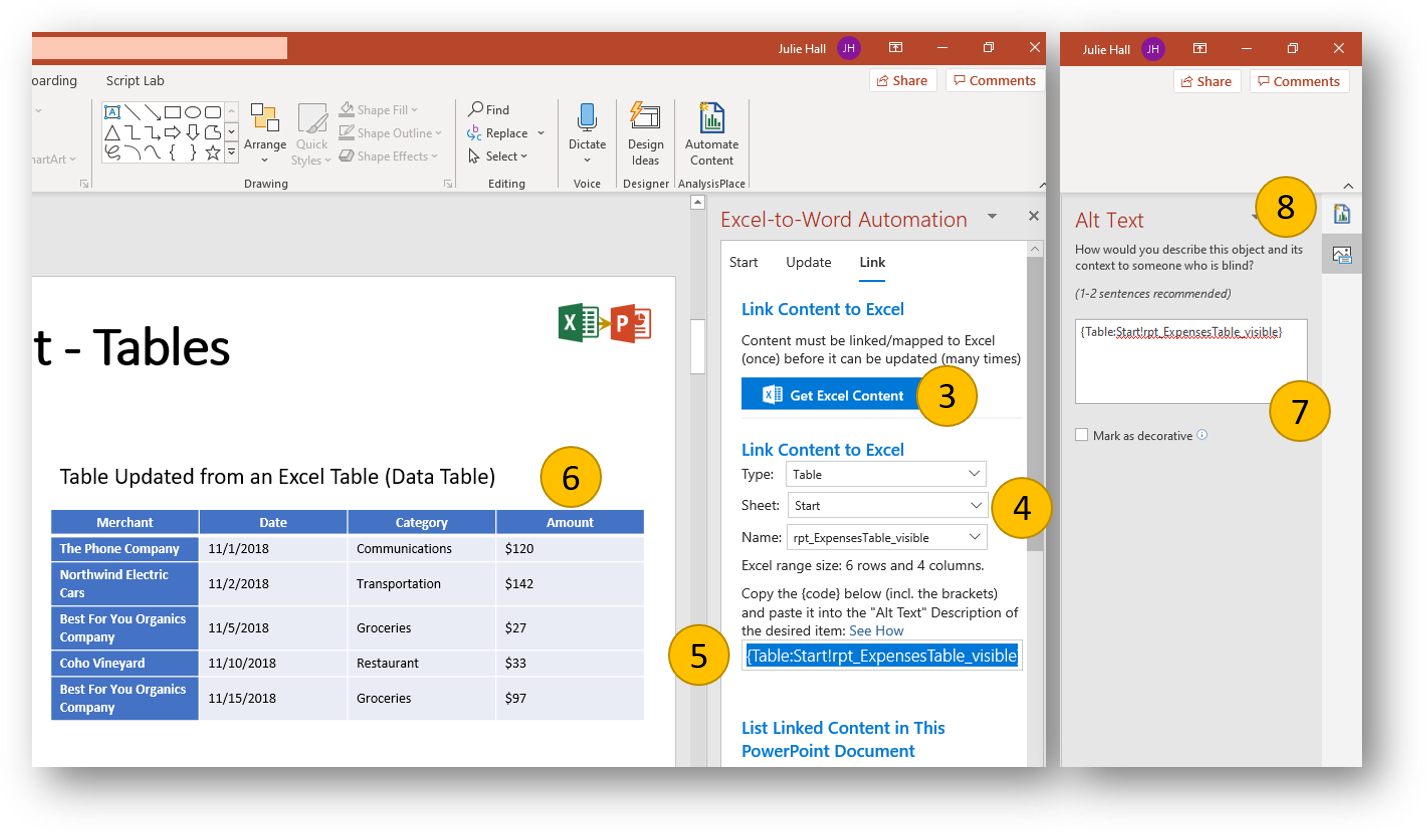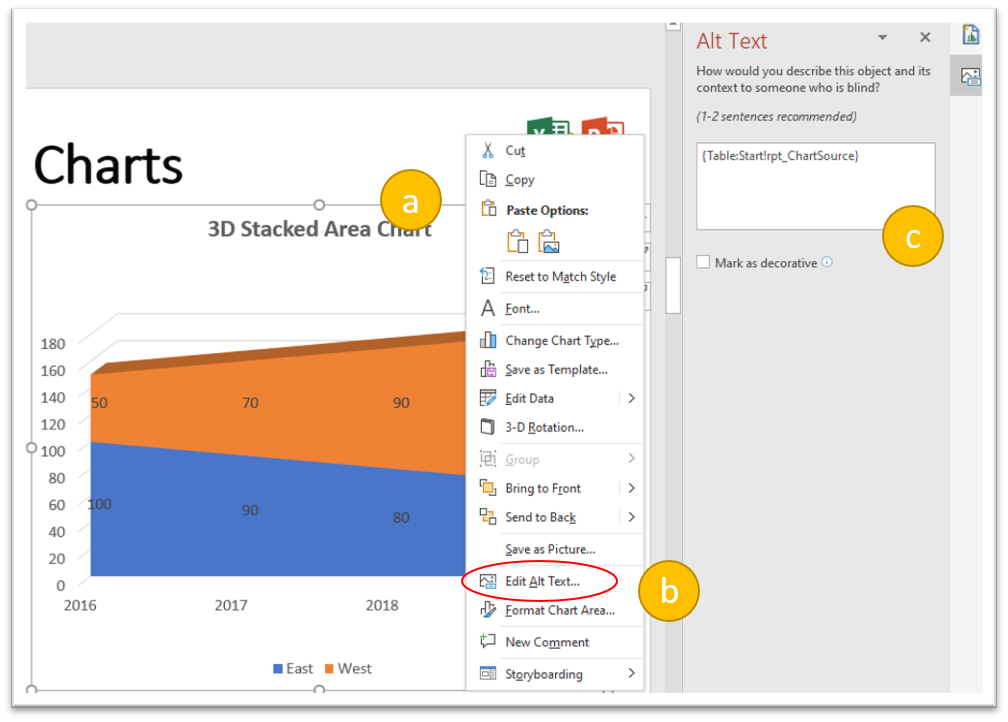How to Link Excel to PowerPoint (Legacy Method)
New MethodLinking content between Excel and PowerPoint is easy, but does require some manual steps:

In Excel
1. Update Named Content (cells, ranges/tables, and charts), starting with your prefix_
2. “Submit” Content
In PowerPoint (PPT)
3. Click “Get Excel Content” on the “Link” tab of the add-in
In PowerPoint (for each item/shape)
4. Select Desired Excel Content from the drop-downs
5. Copy the provided {code}, including the brackets
6. Select (or create) in PPT the desired item shape that matches each type of Excel Content
- Text Content- PPT shape must be an existing text-based shape: title, text box, content placeholder, WordArt, drawing shape, etc. It cannot be an icon, image, table, etc.
-
Table Content - Can be used to link tables or charts
- Tables - PPT Shape must be an existing table (Insert > Table). Or you can paste the table from Excel, then style it as desired.
- Charts - Create a chart in PPT or paste a chart from Excel. *See directions below
-
Image/Chart Content - PPT shape must be an existing image/picture. For example, copy a chart or range from Excel, then paste it into PPT as a picture (not the default chart format) (Use Tiff on a Mac)
- PPT Online: Insert > any Picture or Online Picture
7. Open the Shape's “Alt Text” “Description” box by right-clicking on the shape border (a) and choosing 'Edit Alt Text.' (b) Copy the code provided in step 5 into the Alt Text box. (c)

8. Your application cannot show both the "Add-in" and the "Edit Alt Text" information at the same time, you will need to toggle back and forth between the two.
9. Complete linking of Excel to PowerPoint and perform the final steps to update your PPT document
Make changes in Excel and "Submit" them from Submit tab in the add-in
In PPT "Update Document" from the Update tab of the add-in
In PPT "Download Document" to see the changes sent from Excel
* How to Link Charts in PowerPoint from Ranges or Tables in Excel
Cloud updates in PPT only transfer the source data (not the charts) when updating charts. This can dramatically reduce data transfer and file size versus using
images of the charts. It allows you to have many large updatable charts in your presentation.
In Excel, name the source range/table using the suffix _val for example “rpt_table_val” to ensure that your data will be transferred correctly. “Submit Content” from the add-in
In PPT insert a Chart
- Create the chart in Excel, then paste it into PowerPoint (you can “embed data or “link data”)
- Create the chart in PowerPoint (Insert > illustrations > Chart)
Follow the above directions for linking Excel to PPT, being sure to choose the table content that matches the chart you wish to update.
Known Issues
PowerPoint updating does work great for most files, on most computers. However, PowerPoint updating is complex and on rare occasions has some known issues on some computers. Please try it before purchasing a subscription.
Note that updating PowerPoints from templates (Business Feature Edition) does not have any of these issues.
- Large PowerPoint files on some older computers can cause "out of memory" issues and cannot be updated. The add-in will provide messages indicating if this is the case.
- Due to incompatibilities on some computers (rare, but more likely on Macs), PowerPoint updates (and listing of linked content) may not be possible. The add-in will provide messages indicating if this is the case when attempting to "List Linked Content" or "Update Document".
- On some PCs, PowerPoint occasionally partially freezes (the original PPT file) after opening the downloaded/updated PPT file. Enabling the new document that is created, seems to prevent this issue. This is not an issue when updating through Personal Templates or Business Templates through Excel. This is an Office bug, not an issue with the add-in.
We are continually working on fixing these issues. You are welcome to provide feedback regarding issues/errors.